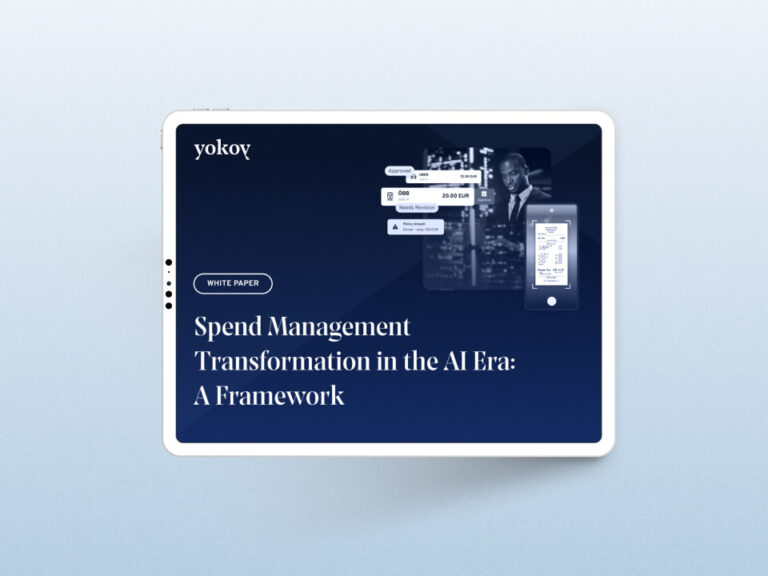In recent years, the advancement of technology has revolutionized various aspects of our lives, including the financial sector. One such innovation gaining traction is autonomous finance. This comprehensive guide aims to shed light on the concept of autonomous finance, its underlying technology, key features, benefits, and potential challenges.
Understanding the concept of autonomous finance
Autonomous finance refers to the use of advanced technology, such as artificial intelligence and machine learning, to automate and streamline financial processes. It harnesses the power of algorithms and data analysis to provide personalized financial planning and automate transactions and investments.
By leveraging technology, autonomous finance aims to enhance efficiency, decision-making, and ultimately, the overall financial well-being of individuals.
Autonomous finance is revolutionizing the way individuals manage their finances.
With the help of cutting-edge technology, individuals can now delegate everyday financial tasks, such as budgeting, investing, and saving, to automated systems. These systems analyze personal financial data, identify patterns, and make recommendations based on individual goals and risk tolerance.
Imagine a world where you no longer have to spend hours poring over spreadsheets and financial statements.
Autonomous finance takes care of all the number-crunching for you, allowing you to focus on what truly matters – achieving your financial goals. Whether you’re saving for a down payment on a house or planning for retirement, autonomous finance can provide you with the tools and insights you need to make informed decisions.
Definition of autonomous finance and basic principles
At its core, autonomous finance combines cutting-edge technology with financial management principles. It enables individuals to delegate everyday financial tasks, such as budgeting, investing, and saving, to automated systems.
These systems analyze personal financial data, identify patterns, and make recommendations based on individual goals and risk tolerance.
Autonomous finance operates based on the underlying principles of data-driven insights, continuous learning, and adaptability. The system continually gathers data from various sources, from bank statements to spending patterns, and uses this information to refine its recommendations.
With time, the system becomes more familiar with individual preferences and can generate more accurate and relevant financial strategies.
Imagine having a personal financial advisor who is available to you 24/7, analyzing your financial data and providing you with tailored recommendations. That’s the power of autonomous finance. It takes into account your unique financial situation, goals, and risk tolerance to create a personalized financial plan that works for you.
White paper
Finance 4.0: How the Fourth Wave Is Reshaping the Financial Centre
What is Finance 4.0 and what does it mean for CFOs? How is Finance 4.0 different from it predecessors? Discover it all on our white paper.

The evolution of autonomous finance
Autonomous finance has evolved alongside advancements in technology and rising customer demands for personalized financial services. Initially, financial institutions used basic algorithms to automate mundane tasks like account balances and transaction reconciliation.
However, with improved computing power and sophisticated machine learning algorithms, autonomous finance has transformed into a powerful tool for individuals and institutions alike.
Today, autonomous finance platforms offer features beyond simple automation. They provide users with actionable insights, investment suggestions, and customizable financial plans. Machine learning algorithms analyze data from various sources, enabling the system to identify trends, predict future outcomes, and offer personalized recommendations.
Imagine being able to access real-time market data, track your investments, and receive personalized investment suggestions – all in one place.
That’s the reality of autonomous finance. It empowers individuals to take control of their financial future by providing them with the tools and information they need to make informed decisions.
As technology continues to advance, the possibilities for autonomous finance are endless. From advanced risk management techniques to predictive analytics, autonomous finance has the potential to revolutionize the way we manage our finances.
It’s an exciting time to be a part of the financial world, as we witness the transformation of traditional financial practices into a more efficient and personalized experience.
The technology behind autonomous finance
The backbone of autonomous finance lies in its utilization of cutting-edge technology. Two key components that drive the success of autonomous finance are artificial intelligence (AI) and machine learning (ML).
Artificial intelligence, particularly machine learning, plays a pivotal role in autonomous finance. Machine learning algorithms enable financial systems to learn from historical data, identify patterns, and make predictions based on these insights. It allows the system to adapt to user behavior, preferences, and market conditions.
By leveraging AI and ML, autonomous finance platforms can analyze vast amounts of financial data, including personal transactions, income, and spending patterns. This analysis enables the system to generate tailored financial plans, identify potential investment opportunities, and optimize financial decisions.
In addition to AI and ML, there are other technological advancements that contribute to the success of autonomous finance.
One such advancement is natural language processing (NLP). NLP allows the system to understand and interpret human language, enabling users to interact with the platform through voice commands or written text. This makes the user experience more intuitive and convenient.
Role of artificial intelligence and machine learning
Artificial intelligence and machine learning are at the core of autonomous finance. These technologies empower financial systems to process and analyze vast amounts of data, enabling them to provide personalized financial recommendations and insights.
Machine learning algorithms play a crucial role in autonomous finance by continuously learning and improving from the data they receive. They can identify patterns and trends in financial data, helping users make informed decisions about their finances. By adapting to user behavior and market conditions, the system can provide real-time recommendations and adjust financial plans accordingly.
Furthermore, AI and ML algorithms can detect anomalies and potential fraud in financial transactions, enhancing the security and integrity of autonomous finance platforms. By analyzing transaction patterns and user behavior, the system can identify suspicious activities and take proactive measures to protect users’ financial assets.
Blog article
AI in Finance: 10 Use Cases That Will Become More Common in 2023
What can finance AI do for you? Learn how artificial intelligence is changing the finance industry in general, and the spend management process in particular.

Lars Mangelsdorf,
CCO at Yokoy
The importance of data analysis
Another crucial aspect of autonomous finance is the analysis of massive datasets. Through deep data analysis, autonomous finance systems gain a comprehensive understanding of an individual’s financial situation and goals. This analysis considers a wide range of factors, including income, expenses, debts, and investment performance.
By collating and analyzing this data, autonomous finance platforms can provide users with detailed financial insights. These insights range from expense categorization and budget optimization to investment portfolio assessments. Data analysis fuels the accuracy and relevance of the financial recommendations provided by autonomous finance systems.
Moreover, data analysis plays a vital role in risk management within autonomous finance. By continuously monitoring and analyzing market trends, the system can identify potential risks and take proactive measures to mitigate them. This helps users make informed decisions and minimize potential losses.
Additionally, data analysis enables autonomous finance platforms to offer personalized financial education and guidance. By understanding an individual’s financial habits and goals, the system can provide tailored educational resources and recommendations to help users improve their financial literacy and make better financial decisions.
In conclusion, the technology behind autonomous finance is multifaceted and constantly evolving. Artificial intelligence, machine learning, natural language processing, and data analysis are just a few of the key components that drive the success of autonomous finance platforms.
By leveraging these technologies, autonomous finance systems can provide personalized financial recommendations, enhance security, and empower individuals to take control of their financial future.
Check out our newsletter
Don't miss out
Join 12’000+ finance professionals and get the latest insights on spend management and the transformation of finance directly in your inbox.
Key features of autonomous finance
Autonomous finance platforms offer several essential features that distinguish them from traditional financial management tools.
Personalized financial planning
One of the standout features of autonomous finance is its ability to provide individuals with personalized financial planning. Through the analysis of extensive financial data, autonomous finance systems can generate customized financial strategies tailored to each user’s unique needs, preferences, and goals. This high level of personalization enhances the effectiveness and relevance of financial recommendations.
Automated transactions and investments
Autonomous finance platforms automate routine financial tasks such as bill payments, fund transfers, and investment transactions. By eliminating the need for manual intervention, individuals can save time and reduce the risk of errors associated with manual processing. Automated transactions and investments also help in maintaining consistency and discipline in financial management.
Benefits of autonomous finance
Adopting autonomous finance can yield numerous benefits for individuals and businesses alike.
Efficiency and time-saving
One of the primary advantages of autonomous finance is the heightened efficiency and time-saving it offers.
By automating financial processes and leveraging AI and ML algorithms, individuals can minimize the time spent on administrative tasks. This time can then be redirected towards more productive activities, such as pursuing personal interests or focusing on strategic financial decisions.
Improved financial decision making
Autonomous finance empowers individuals to make more informed and intelligent financial decisions. By analyzing vast amounts of data and providing actionable insights, autonomous finance platforms enhance individuals’ awareness of their financial situation, potential risks, and investment opportunities. With access to reliable information, individuals can make informed choices that align with their long-term financial goals.
Blog article
The Game-Changing Potential of AI in Finance Transformation
The AI-shaped finance function of the future will look profoundly different from the one of today: It will be defined by a highly collaborative process, with humans and machines working together to achieve common goals.

Melanie Gabriel,
CMO at Yokoy
Potential challenges and risks of autonomous finance
While autonomous finance offers tremendous potential, it is not without its challenges and risks. It is crucial for individuals and institutions to be aware of these potential pitfalls.
Security and privacy concerns
As autonomous finance relies heavily on the collection and analysis of personal financial data, there is an inherent risk of data breaches and privacy breaches. Protecting sensitive information and ensuring robust security measures is of utmost importance to mitigate these risks. Providers of autonomous finance solutions must prioritize data security and employ industry-standard encryption techniques to safeguard user data.
Regulatory and compliance issues
The development and implementation of autonomous finance raise complex regulatory and compliance issues. Regulatory bodies must adapt to the rapidly changing landscape of autonomous finance to ensure that it complies with existing laws and regulations. Striking a balance between innovation and adherence to regulatory standards is crucial to foster the sustainable growth of autonomous finance.
Conclusion
In conclusion, autonomous finance represents a transformative shift in financial management. By harnessing the power of AI, ML, and data analysis, autonomous finance platforms offer personalized financial planning, streamline transactions and investments, and facilitate improved financial decision-making.
While the benefits are substantial, it is essential to address the challenges and risks associated with security, privacy, and regulatory compliance. By doing so, we can truly unlock the potential of autonomous finance and empower individuals and institutions to achieve their financial goals in an efficient and intelligent manner.
White paper
Spend Management Transformation in the AI Era: A Framework
In the era of AI-driven digital transformation, traditional finance processes are becoming obsolete. As companies grapple with increasing complexities and rising competition, they must recognise the transformative potential of artificial intelligence to stay ahead of the curve.
